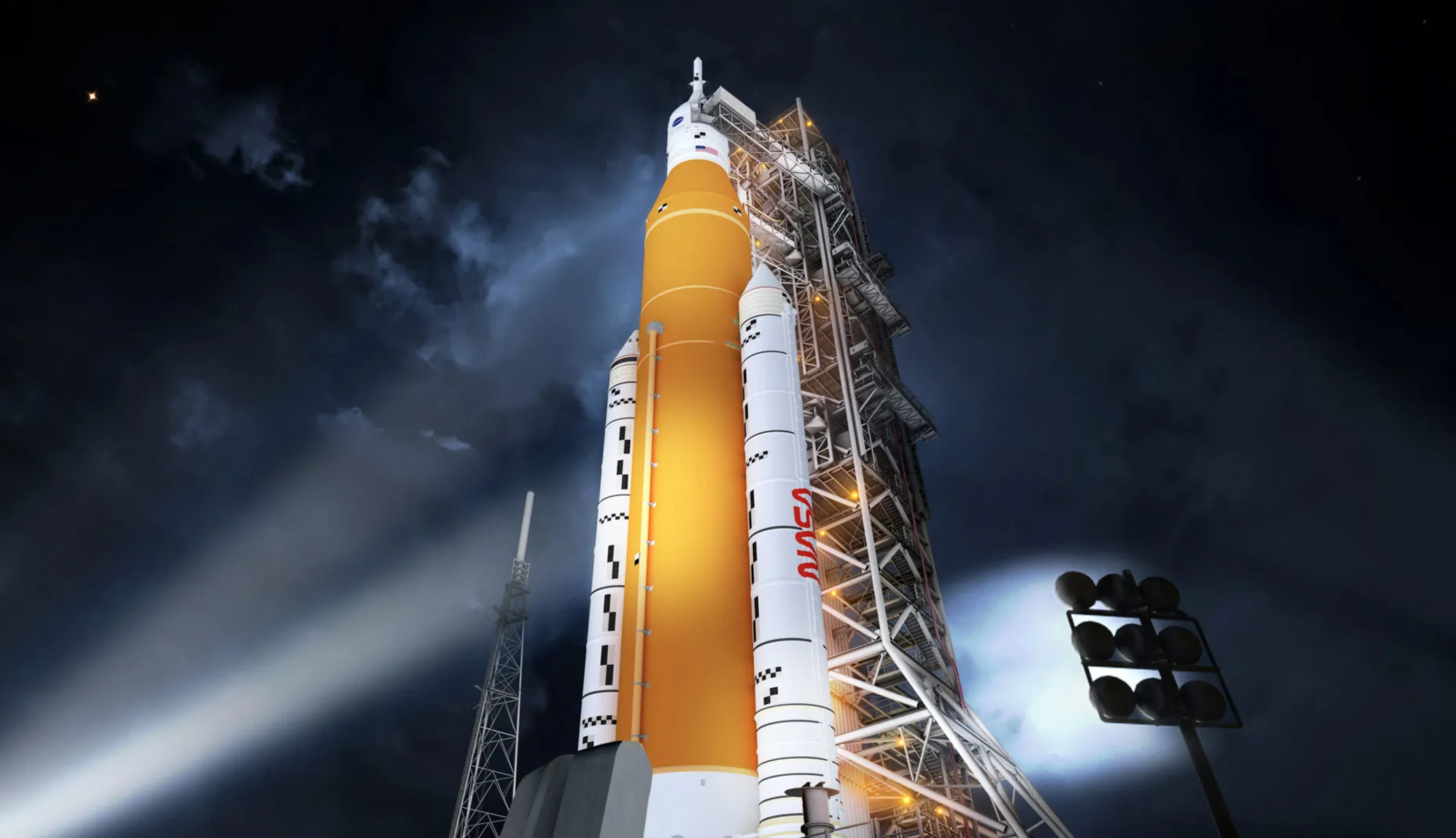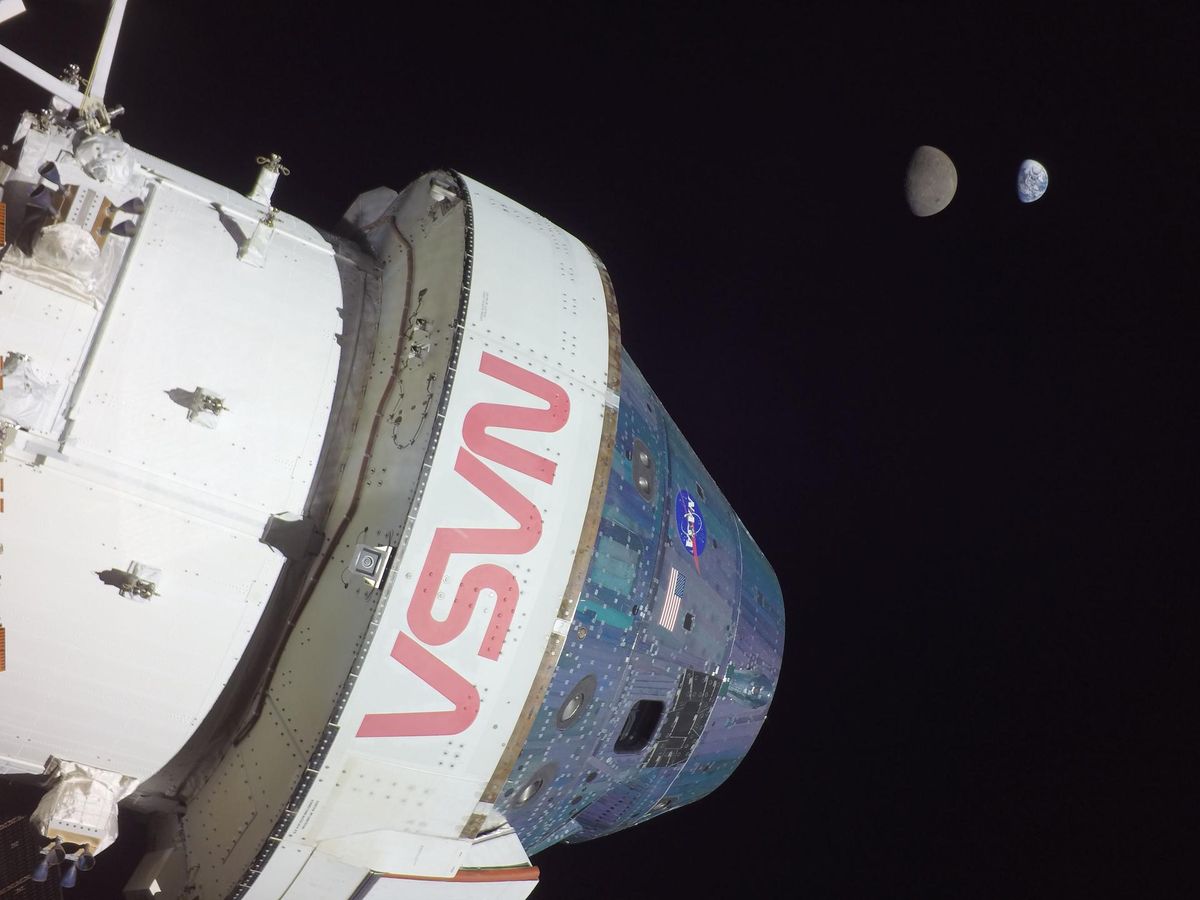Introduction
Get ready for an exciting and historic event – the Artemis 1 launch! The Artemis program, led by NASA, aims to return humans to the Moon, but this time with the goal of establishing a sustainable presence. Artemis 1 is the first step towards this ambitious endeavor, serving as an uncrewed test flight of the Orion spacecraft.
As space enthusiasts, we’re eagerly awaiting this landmark moment. Watching the Artemis 1 launch promises to be a thrilling experience, whether you choose to witness it in person or follow it online. In this article, we’ll guide you on how to make the most out of this extraordinary event.
Before we dive into the details, let’s take a quick look at the background behind the Artemis 1 mission. This mission is crucial in testing the performance and capabilities of the Orion spacecraft, the Space Launch System (SLS), and the ground systems that will support future crewed missions to the Moon and beyond.
With the Artemis program, NASA aims to establish a sustainable human presence on the Moon by 2024. This includes not only landing astronauts on the lunar surface but also establishing a lunar gateway and conducting scientific experiments to aid future deep space missions.
Now that we have a brief overview, let’s explore how you can prepare for the Artemis 1 launch and ensure you have an unforgettable experience.
Background on Artemis 1 Mission
The Artemis 1 mission marks a significant milestone in NASA’s Artemis program, which aims to return humans to the Moon and pave the way for future deep space exploration. This uncrewed test flight is crucial in testing the capabilities of the Orion spacecraft, the Space Launch System (SLS), and the ground systems that will make human lunar landings possible.
The Orion spacecraft, developed by NASA and its commercial partners, is designed to carry astronauts beyond Earth orbit, including to the Moon and beyond. Artemis 1 will be the first flight of the agency’s new Orion spacecraft configuration, which will undergo an extensive series of tests during its journey to the Moon.
Artemis 1 will also launch the most powerful rocket in the world, the Space Launch System (SLS). This advanced launch vehicle is crucial in delivering the Orion spacecraft on its trajectory towards the Moon. With its unprecedented lifting capacity, SLS will enable the Artemis missions to carry larger payloads, including habitats, scientific instruments, and rovers, to the lunar surface.
Additionally, the Artemis 1 mission will validate the ground systems needed to support crewed missions to the Moon. These ground systems include the launch pad, facilities, and communication networks that will enable astronauts to safely launch, travel, and land on the lunar surface.
By successfully executing the Artemis 1 mission, NASA will gain valuable data and insights, further advancing the technologies and knowledge required for future crewed missions. This uncrewed mission is a crucial step towards the ultimate goal of landing astronauts, including the first woman and the next man, on the Moon by 2024. It sets the stage for the subsequent Artemis missions, which will establish a sustainable human presence on the lunar surface.
The Artemis program represents an international partnership, with NASA collaborating with commercial and international partners to achieve its ambitious goals. Through this collaborative effort, the program aims to leverage the strengths and resources of various nations to explore and utilize the Moon as a platform for scientific research and space exploration milestones.
Now that we have a better understanding of the significance and objectives of the Artemis 1 mission, let’s explore how we can prepare ourselves to witness this historic event.
Preparing for the Launch
As the Artemis 1 launch draws near, it’s essential to make the necessary preparations to ensure you have the best possible experience. Follow these tips to make the most out of this thrilling event:
Stay Updated: In the days leading up to the launch, stay informed about any updates or changes in the launch schedule. Visit the official NASA website, follow their social media channels, and sign up for email notifications to receive the latest information.
Plan Your Trip: If you plan on watching the launch in person, consider the logistics of your trip. Check the location and time of the launch, and plan your travel accordingly. Arrive early to secure a good viewing spot and to allow for any unforeseen circumstances.
Check the Weather: The weather plays a crucial role in determining whether a launch can proceed as scheduled. Keep an eye on the weather forecast, as unfavorable conditions may result in delays or rescheduling of the launch. Have a backup plan in case the launch is postponed.
Know the Viewing Options: Research the various viewing options available to you. If you’re near the launch site, consider finding a public viewing area or designated viewing sites. Check if there are any local events or watch parties organized by space enthusiasts or organizations.
Consider Safety: Safety should be your top priority during any launch event. Follow the instructions provided by the authorities and respect any restricted areas. Be aware of the potential hazards associated with rocket launches and act responsibly. It’s advisable to bring necessary items such as sunscreen, hats, and water to protect yourself from the elements.
Bring Camera and Binoculars: Capture the excitement of the launch by bringing a camera or smartphone to take photos or videos. If possible, bring binoculars to get a closer look at the rocket as it ascends into space. Remember to fully charge your devices and bring extra batteries or a portable charger.
Engage with the Community: The Artemis 1 launch has generated significant interest among space enthusiasts around the world. Engage with the community by joining online forums, social media groups, or attending local events. Share your excitement, exchange insights, and connect with like-minded individuals who share your passion for space exploration.
Enjoy the Journey: Watching a rocket launch is a once-in-a-lifetime experience for many. Take a moment to appreciate the significance of the event and enjoy the journey. Immerse yourself in the atmosphere, feel the anticipation, and savor the excitement as the mission unfolds.
By taking these steps, you’ll be well-prepared and ready to witness the awe-inspiring Artemis 1 launch. Whether you decide to watch it in person or from the comfort of your home, this historic event is bound to leave a lasting impression.
Choosing the Best Viewing Location
When it comes to experiencing the Artemis 1 launch, choosing the best viewing location is essential to ensure an unobstructed and memorable experience. Here are some factors to consider when selecting your viewing spot:
Proximity to the Launch Site: If you’re fortunate enough to be near the launch site, take advantage of this proximity. Being in close proximity allows you to witness the raw power and intensity of the launch. Check for any designated public viewing areas or recommended spots for the best viewing experience.
Elevation and Line of Sight: Look for locations that offer a clear line of sight to the launchpad. Higher elevations or areas with unobstructed views, such as hills, rooftops, or open fields, can provide a better vantage point. Ensure that there are no tall buildings or natural barriers that may obstruct your view.
Accessibility and Safety: Consider the accessibility and safety of the viewing location. Choose areas that are easily accessible and have adequate facilities such as parking, restrooms, and crowd management measures. Be aware of any safety guidelines and restrictions imposed by authorities, and follow them diligently to ensure your safety and that of others.
Local Viewing Events: Check if there are any local events or public watch parties organized in your area. These events often provide designated viewing areas with additional amenities, live coverage, and a festive atmosphere. Joining these events can enhance your overall experience and allow you to connect with fellow space enthusiasts.
Online Viewing: If you’re unable to physically attend the launch or can’t find a suitable viewing location, don’t worry. NASA typically provides live streaming of launches on their website and social media channels. Watching online allows you to witness the launch from the comfort of your home and still be part of the excitement. Gather your friends or family, grab some snacks, and create your own viewing party.
Consider Local Restrictions: Be mindful of any local restrictions or regulations that may affect the viewing experience. Some areas may have limitations on parking, overcrowding, or public access during launch events. Check for any specific guidelines provided by authorities or event organizers to ensure a smooth and enjoyable experience.
Flexibility and Alternatives: Launches are subject to delays or rescheduling due to various factors such as weather conditions or technical issues. Keep in mind that these situations are not uncommon in the space industry. Stay flexible and have backup plans. If the launch gets postponed, reschedule your viewing plans or consider attending the next available launch opportunity.
By considering these factors, you can choose a viewing location that offers an optimal view of the Artemis 1 launch. Remember, witnessing the launch of a monumental mission like this is a unique experience, so make sure to find the perfect spot to enjoy this historic event.
Tips for Watching the Launch Online
If you’re unable to attend the Artemis 1 launch in person, watching it online is a convenient and immersive alternative. Here are some helpful tips to enhance your experience of watching the launch online:
Choose a Reliable Source: Select a reliable and official source for live streaming the launch. NASA’s official website and social media channels, such as YouTube or Facebook, typically provide high-quality and real-time coverage of space missions. These platforms offer expert commentary, multiple camera angles, and behind-the-scenes insights.
Check Your Internet Connection: Ensure that you have a stable and high-speed internet connection to avoid interruptions during the live stream. A slow or unreliable connection can disrupt your viewing experience and cause buffering issues. Consider connecting your device directly to your modem or router for a more stable connection.
Create a Viewing Atmosphere: Set the mood for the launch by creating a space-themed atmosphere at home. Dim the lights, turn off distractions, and use a large screen or projector for a more immersive experience. Consider decorating your viewing area with space-themed decorations and snacks to make it feel like you’re part of the live event.
Engage with Live Chat or Social Media: Many platforms offer live chat or social media integration during the launch. Take advantage of this feature to engage with other viewers who are watching the launch online. Discuss the mission, share your excitement, and ask questions to enhance your overall experience.
Follow Expert Commentary: Listen to the expert commentary provided during the live stream. NASA often invites scientists, engineers, and astronauts to provide insights and explanations about the mission. These valuable commentaries can deepen your understanding of the Artemis program and enrich your viewing experience.
Switch Camera Angles: Some online platforms allow you to switch between different camera angles during the launch. Take advantage of this feature to get a closer look at the rocket, follow its trajectory, or switch to an aerial view. Experiment with different angles to find the most captivating perspective.
Share the Experience: Watching the launch online doesn’t mean you have to enjoy it alone. Share the experience with friends, family, or fellow space enthusiasts. Connect via video calls or engage in real-time discussions on social media. Sharing the excitement can make the experience more enjoyable and create a sense of community.
Follow NASA’s Social Media: In addition to live streaming, follow NASA’s social media accounts for real-time updates, behind-the-scenes content, and additional information about the mission. NASA often shares exclusive photos, videos, and interviews that provide a deeper glimpse into the Artemis program.
Replay and Highlights: If you miss any part of the live stream or want to relive the launch, most online platforms archive the footage. Take advantage of this feature to rewatch the launch, catch any moments you may have missed, or share highlights with others.
By following these tips, you can make the most out of watching the Artemis 1 launch online. Embrace the convenience and flexibility of online viewing while still enjoying a captivating and immersive experience of this remarkable mission.
What to Expect During the Launch
The Artemis 1 launch promises to be an awe-inspiring spectacle, filled with anticipation and excitement. Here’s what you can expect during the launch:
Countdown and Liftoff: As the countdown begins, the atmosphere builds with each passing second. You’ll witness the dramatic liftoff of the rocket as it propels the Orion spacecraft and the Space Launch System (SLS) towards space. The powerful engines and roaring sound will leave you in awe of the sheer force involved in propelling such a massive vehicle into orbit.
Rocket Ascending: As the rocket climbs higher into the sky, you’ll notice its speed gradually increasing. The rocket will continue to gain altitude until it reaches the desired trajectory for the Artemis 1 mission. Watch with anticipation as the rocket disappears into the vastness of space, leaving behind a trail of exhaust and flames.
Stage Separation: During the ascent, you’ll witness the separation of different stages of the rocket. The Space Launch System (SLS) is designed to shed its spent rocket boosters and core stage as it progresses towards space. These separations are crucial to maximize efficiency and allow the remaining components to continue their journey.
Main Engine Cutoff (MECO): Once the rocket reaches the desired speed and altitude, the main engines will shut down, marking the main engine cutoff (MECO) phase. At this point, the rocket will have achieved sufficient velocity to enter an initial orbit or begin its trajectory towards the Moon.
Fairing Jettison: The fairing, or the protective covering of the spacecraft, will be jettisoned once it is no longer needed to shield the payload. This exposes the Orion spacecraft and allows it to continue its journey towards its destination. The jettisoned fairing may be visible as it separates from the rocket and falls into the ocean or designated areas.
Spacecraft Separation: Eventually, the Orion spacecraft will separate from the remaining components of the rocket. This signals the commencement of its independent journey and the beginning of its mission. The spacecraft will continue its trajectory towards the Moon or enter a designated orbit for testing and further maneuvers.
Live Commentary: During the live stream or public viewing events, you’ll have access to expert commentary and updates. Experienced commentators will provide insights about the various stages of the launch, explain the mission objectives, and share unique details about the Artemis program. This commentary adds depth and perspective to your viewing experience.
Emotional Connection: Watching a rocket launch is a powerful experience that can evoke a range of emotions. The combination of technological marvel, human ingenuity, and the quest for exploration can leave you feeling inspired, humbled, and filled with a sense of wonder. Embrace the emotional connection that comes with witnessing this historic event.
Mission Duration: The duration of the Artemis 1 mission will depend on its objectives, trajectory, and testing requirements. It may last anywhere from a few days to several weeks. Keep in mind that subsequent events, such as lunar flybys or re-entry into Earth’s atmosphere, may occur at later stages of the mission.
As you prepare to watch the Artemis 1 launch, keep these expectations in mind. Remember, each launch is unique, and unforeseen circumstances may alter the sequencing or duration of specific stages. Embrace the uncertainty and immerse yourself in the incredible journey of space exploration.
Safety Guidelines and Reminders
While watching the Artemis 1 launch, it is essential to prioritize safety for yourself and those around you. Here are some important safety guidelines and reminders to keep in mind:
Follow Instructions: Listen to and follow the instructions provided by authorities, event organizers, and security personnel. They are there to ensure the safety and smooth execution of the launch event. Respect any designated restricted areas and avoid trespassing into prohibited zones.
Maintain a Safe Distance: Maintain a safe distance from the launch site and any potential hazard zones. Rockets produce intense heat, noise, and exhaust gases during launch, which can pose risks to spectators. Follow any specified buffer zones or recommended viewing distances to ensure your safety.
Protective Gear: Be prepared for the elements by wearing appropriate protective gear such as sunscreen, hats, and sunglasses to shield yourself from the sun’s rays. Additionally, consider bringing earplugs or noise-cancelling headphones to protect your ears from the loud rumble of the launch.
Stay Hydrated: Launch events can be physically demanding, especially if held during warm weather. Stay hydrated by drinking plenty of water throughout the event. Dehydration can lead to fatigue and other health issues, so ensure you have an adequate supply of water and stay well-hydrated.
Emergency Preparedness: Familiarize yourself with the emergency procedures and safety protocols in case of any unexpected situations. Be aware of the exits, emergency evacuation routes, and location of first aid stations. Stay calm and follow instructions in case of an emergency.
Dispose of Waste Properly: Help maintain the cleanliness of the viewing area by disposing of waste properly. Use designated trash bins or waste containers provided at the location. Keep the surroundings clean and respect the environment.
Be Respectful of Others: Remember that you are not the only one excited about the launch. Be respectful of others around you and their viewing experience. Avoid obstructing their view or causing disturbances. Ensure that everyone has an equal opportunity to enjoy the event.
Monitor Weather Conditions: Stay updated on the weather conditions leading up to the launch and during the event. Inclement weather, such as lightning, strong winds, or heavy rainfall, can pose risks to spectators. Follow any guidance provided by authorities regarding weather-related changes or delays in the launch schedule.
Stay Informed: Keep yourself informed about any last-minute changes, cancellations, or rescheduling of the launch. Stay connected with official sources such as NASA’s website, social media channels, or local news outlets. By staying informed, you can adjust your plans accordingly and ensure a smooth experience.
Show Patience and Flexibility: Keep in mind that launch events are subject to various factors that may lead to delays or changes. Practice patience and flexibility if the launch schedule is adjusted. Remember that safety is the top priority, and it is better to wait for a safe launch rather than rush the process.
By adhering to these safety guidelines, you can ensure your well-being and the well-being of others as you witness the extraordinary Artemis 1 launch. Let’s make safety a priority to fully enjoy this remarkable event.
Frequently Asked Questions
As the Artemis 1 launch approaches, you may have some questions about the event. Here are answers to some frequently asked questions:
1. Can I watch the Artemis 1 launch in person?
Yes, if you are near the launch site or able to travel to the designated viewing areas, you can witness the launch in person. Check NASA’s official website for information on public viewing locations and safety guidelines.
2. Can I watch the launch online?
Absolutely! NASA typically provides live streaming of launches on their website and social media channels, allowing you to watch the launch from anywhere with an internet connection.
3. What time will the launch take place?
The specific launch time may vary depending on various factors such as weather conditions and technical readiness. Stay updated with the launch schedule provided by NASA through their official website or social media channels.
4. Will the launch be visible from my location?
Visibility of the launch depends on your location in relation to the launch site and atmospheric conditions. Check online resources or consult with local astronomy or space enthusiast groups to determine if the launch will be visible from your area.
5. How long does the launch event last?
The duration of the launch event can vary, but typically, from liftoff to spacecraft separation, it can range from a few minutes to several hours. The entire mission duration, including subsequent stages, can be several days to weeks.
6. Can I take pictures or videos during the launch?
Yes, you can capture the excitement by taking pictures or videos during the launch. However, be mindful of any guidelines or restrictions in place at the viewing location. Remember to enjoy the moment and not get too engrossed in capturing the perfect shot.
7. Can I bring a telescope or binoculars?
Yes, bringing a telescope or binoculars can enhance your viewing experience. Binoculars offer a closer look at the rocket as it ascends, while a telescope can provide more detailed observations. Ensure you have a stable viewing platform and take care not to obstruct others’ views.
8. What should I wear to the launch?
Dress comfortably and consider the weather conditions at the location. Keep in mind that launch events can be hot or cold depending on the season and time of day. Wear appropriate clothing, including hats, sunglasses, and sunscreen to protect yourself from the sun’s rays.
9. Can I bring food and drinks?
Check the guidelines provided by the event organizers regarding food and drink policies. Some locations may allow outside food and drinks, while others may have restrictions or provide concessions onsite. Be prepared and bring snacks or drinks as necessary.
10. Is there an age restriction for attending the launch?
There is typically no age restriction for attending the launch. However, keep in mind that launch events can be loud and crowded, which may not be suitable for very young children or individuals with certain health conditions. Use your judgment and ensure the comfort and well-being of everyone in your group.
If you have any additional questions about the Artemis 1 launch, refer to NASA’s official channels or reach out to local authorities or space enthusiast groups for more information.
Conclusion
The Artemis 1 launch is a milestone event in NASA’s ambitious Artemis program, symbolizing humanity’s return to the Moon and the beginning of a new era of exploration and discovery. Whether you choose to witness the launch in person or watch it online, this historic event is bound to captivate your imagination and leave you in awe of human ingenuity and scientific progress.
Through this article, we have explored various aspects of preparing for and experiencing the Artemis 1 launch. We discussed the background of the mission, provided tips for choosing the best viewing location, and highlighted safety guidelines to ensure a safe and enjoyable experience for everyone involved. We also delved into the options for watching the launch online and what to expect during the event.
As the launch day approaches, it’s important to stay updated with the latest information and adhere to any changes in the launch schedule or guidelines provided by authorities. Remember to be patient, flexible, and respectful of others as you share this momentous occasion with fellow space enthusiasts and nature lovers alike.
The Artemis 1 launch represents an incredible achievement in our collective efforts to explore and understand the universe. It embodies the spirit of curiosity, innovation, and collaboration as we strive to push the boundaries of human knowledge and extend our reach beyond Earth’s orbit.
Whether you witness the launch in person, tune in online, or engage with the community surrounding the event, the Artemis 1 launch is a reminder of the limitless possibilities that lie ahead for humanity. Let us embrace the excitement, wonder, and inspiration that this launch brings, and join together in celebrating this significant milestone in our shared journey into the cosmos.

























